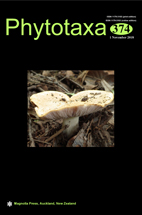Abstract
Polygonatum Miller (1754: without pagination) (Asparagaceae, Nolinoideae) is a relatively large genus with great diversity of plant form, habit, and ecology. Most of the diversity is found in the Hengduan of southwestern China and the eastern Himalaya (Jeffrey 1980, Chen & Tamura 2000). Field observations at several localities in Arunachal Pradesh, India and specimen examinations of an anomalous opposite leaved species from the eastern Himalaya (incl. southeastern Tibet) could not be placed in any currently described species (Baker 1875, Hooker 1894, Tang 1978, Jeffrey 1980, Wu 1983, Noltie 1994, Chen & Tamura 2000, Floden 2015). Comparisons to the type specimens of all opposite-leaved species, examination of species in the field, examination of over 6,000 specimens of Polygonatum from multiple herbaria through loans or visits (CAS, F, H, MI, MO, NY, and PE, acronyms follow Thiers 2018) and digital images (BM, E, HITBC, IBSC, K, KUN, L, LBG, P, and SZ) confirms the novelty of this species. In addition, molecular phylogenetic analysis (A. Floden, in preparation) of 250+ samples of Polygonatum including two nuclear genes and chloroplast data have confirmed the molecular distinctiveness of this new species and its placement in the opposite-leaved group of species found in the Himalaya.

